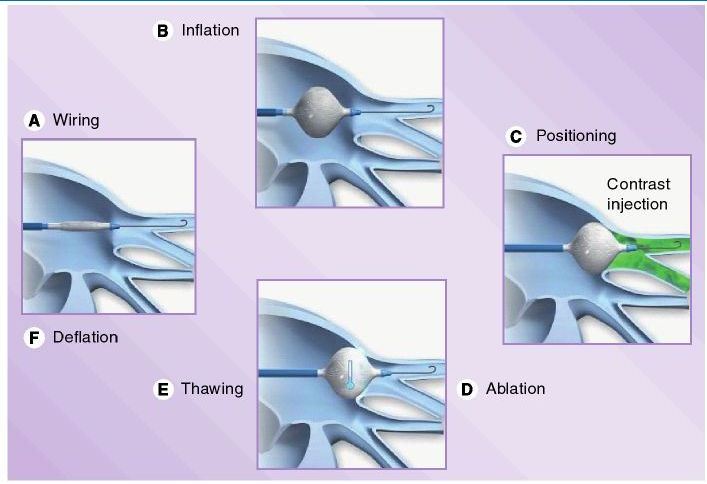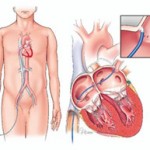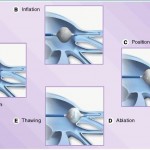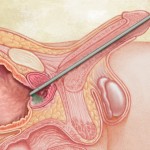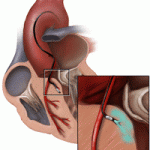Ablation surgery is a procedure to destroy abnormal tissues. Surgical ablation is typically performed with a scalpel, such as the removal of thyroid tissue. In other procedures a laser may be used to vaporize tissue without surgery or radio frequencies may be used to heat the tissue to the point of tissue death.
Ablation therapy is less invasive than surgery. Doctors at use different types of ablation therapies to treat a variety of conditions. Your doctor will perform a thorough evaluation and work with you to determine if ablation is an appropriate treatment for your condition. Doctors skilled in interpreting medical images (radiologists) perform ablations.
Ablation therapy for cancer is used when tumors can’t be removed with surgery, when existing conditions increase the risk of surgery or to relieve pain from bone tumors. The most appropriate form of ablation depends on the location, type, stage and size of the tumor.
Types of ablation available include:
- Cardiac catheter ablation treats heart rhythm disorders such as atrial fibrillation and atrial flutter. The radiologist threads a catheter through the blood vessel and uses heat or cold to destroy abnormal heart tissue.
Pulmonary vein atrium isolation: Research has shown that most atrial fibrillation signals come from the four pulmonary veins. During this procedure, special catheters are inserted into the heart. Two catheters are inserted into the right atrium and two into the left atrium.
A specialized viewing device called intracardiac echocardiography is used to visualize the left atrium during the procedure. One catheter in the left atrium is used to map or locate the abnormal impulses coming from the pulmonary veins. The other catheter is used to deliver the radiofrequency energy to create lesions outside the pulmonary veins. The procedure is repeated for all four pulmonary veins.
The lesions heal and within 4 to 8 weeks, form a circular scar around the pulmonary veins. The scar blocks any impulses firing from within the pulmonary veins, thereby “disconnecting” the pathway of the abnormal rhythm and curing atrial fibrillation.
Ablation of the AV node: During this procedure, the doctor applies radiofrequency energy to injure the AV node. The end result is a permanent, very slow heart rate, since the electrical impulses from the top chamber of the heart cannot travel down to the lower chamber. Therefore, the patient needs a permanent pacemaker to maintain an adequate heart rate.
There is an arrhythmia caused by one or more rapid circuits in the atrium. Atrial flutter ablation is done by applying energy to a structure in the right atrium called the isthmus to stop conduction through this structure.
- Cryoablation freezes and destroys kidney tumors, helps relieve bone tumor pain and treats certain types of arrhythmias. The doctor guides a thin, wand-like device (cryoprobe) to the affected area and forms an ice ball to freeze and destroy the tumor.
- Endometrial ablation reduces heavy menstrual bleeding (menorrhagia) by using heat, cold, laser or other methods to destroy the tissue that lines the uterus (endometrium).
- Endovenous thermal ablation uses heat to shrink and close large varicose veins. It is less invasive than vein stripping.
- Focused ultrasound ablation treats uterine fibroids. Guided ultrasound beams heat fibroids in small sections until all the fibroids have been destroyed.
- Laser photoselective vaporization, which treats benign prostatic hyperplasia. In some cases, it’s used to treat prostate cancer and prostatitis. During this procedure, the doctor inserts a thin tube with an optical system (cystoscope) into the urethra. The doctor then delivers laser energy to the affected area and vaporizes the tissue.
- Radiofrequency ablation destroys cancer cells by heating and destroying them. It’s used to treat liver, kidney and lung tumors and to relieve bone tumor pain. It may also treat Barrett’s esophagus, prostate enlargement, arthritis-related back pain and some types of arrhythmias.
- Septal ablation treats abnormal thickening of heart muscle (hypertrophic cardiomyopathy). A doctor threads a catheter to the thickened heart tissue and delivers a small amount of alcohol that creates a mild heart attack. This ablation helps reduce the thickening in the heart and ease symptoms.
It is also often used in patients who have “extra” tissue in their hearts that creates abnormal electrical impulses. These impulses interfere with the heart’s normal electrical stimulating tissue, and this results in atrial fibrillation, or the quivering of the upper chambers of the heart. This surgery can take several forms, including standard surgery to sever the abnormal tissue, or procedures to freeze or burn the abnormal tissues.
- The Maze Procedure. The maze procedure is an open-heart surgical procedure. The heart is temporarily stopped and the surgeon makes tiny cuts in the heart at points where abnormal electrical impulses are fired toward the atrioventricular (AV) node. Scar tissue forms where the cuts are made, and this scar tissue blocks the electrical impulses.
- Minimally Invasive Surgical Ablation. This type of surgical ablation requires neither opening of the chest nor stopping of the heart. The surgeon inserts small endoscopes containing lights and cameras through small incisions in the chest and then makes tiny incisions in the heart to block the abnormal electrical impulses that stimulate the AV node.
- Modified Maze Procedure. The modified maze procedure is a popular and safer method to rectify atrial fibrillation. The surgeon inserts a catheter into the heart through which he delivers radiofrequency waves, microwaves, laser impulses or cryothermy (freezing methods) to destroy the electrical pathways between the abnormal tissue and the heart. This method is usually done on an out-patient basis.
